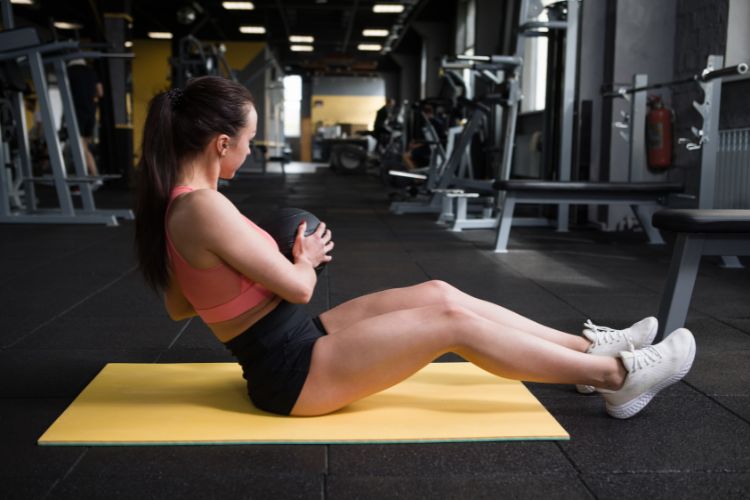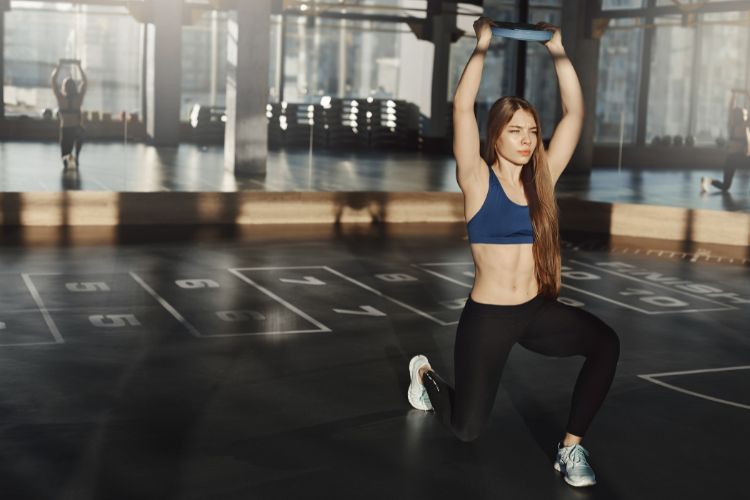Sign up for workout ideas, training advice, reviews of the latest gear and more.






Jumping lunges are a dynamic and explosive variation of the traditional lunge, offering a challenging twist to this fundamental lower-body exercise. This movement not only enhances muscle strength and endurance but also improves cardiovascular fitness, coordination, and agility. In this comprehensive guide, we’ll explore the benefits, proper form, variations, and training tips to help you master the jumping lunge and incorporate it effectively into your fitness routine.
Jumping lunges target the major muscle groups in the lower body, including the quadriceps, hamstrings, glutes, and calves. The explosive nature of the movement helps develop muscle power, leading to increased strength and muscle definition.
The high-intensity nature of jumping lunges elevates your heart rate, making it an excellent exercise for improving cardiovascular endurance. Incorporating jumping lunges into your workout can help burn calories and improve overall cardiovascular health.
Executing jumping lunges requires coordination and balance, as you must stabilize your body while transitioning from one lunge to the next. This helps enhance proprioception and neuromuscular coordination, which are crucial for overall athletic performance.
The plyometric aspect of jumping lunges enhances agility and explosiveness, making it a valuable exercise for athletes and individuals looking to improve their speed and quickness. This can translate to better performance in various sports and activities.
Maintaining proper form is essential to maximize the benefits of jumping lunges exercise and prevent injury. Follow these steps to ensure you perform the exercise correctly:
To prevent injury and ensure you get the most out of your jumping lunges exercise, avoid these common mistakes:
Ensure your front knee stays in line with your ankle during the lunge. Allowing the knee to push forward past your toes can strain the knee joint and increase the risk of injury.
Lower your body until your front thigh is parallel to the ground. Shallow lunges reduce the effectiveness of the exercise and limit muscle engagement.
Engage your core muscles throughout the movement to maintain balance and stability. A weak core can lead to poor form and increased risk of injury.
Land softly and with control to minimize impact on your joints. Avoid landing with locked knees or allowing your body to collapse forward.
Incorporating variations of jumping lunges exercise can add diversity to your workout and target different muscle groups. Here are a few variations to consider:
Jumping lunges can be integrated into various workout routines, whether you prefer high-intensity interval training (HIIT), strength training, or full body bodyweight exercise workouts. Here are a few ways to incorporate them:
Include jumping lunges in your HIIT sessions to elevate your heart rate and burn calories quickly. Perform 30 seconds of jumping lunges exercise followed by 30 seconds of rest, repeating for several rounds.
Use jumping lunges as a dynamic warm-up or as part of a lower-body strength circuit. Combine them with exercises like squats, deadlifts, and leg presses for a comprehensive leg workout.
Create a bodyweight circuit that includes jumping lunges along with push-ups, planks, and burpees. This can be an effective full-body workout that requires no equipment.
Here’s a sample workout that incorporates jumping lunges exercise into a full-body routine:
To get the most out of your jumping lunges exercise, consider these tips:
If you’re new to jumping lunges, start with a few repetitions and gradually increase the number as your strength and endurance improve. This helps prevent injury and allows your body to adapt to the exercise.
Prioritize proper form over speed or intensity. Performing the exercise with correct form ensures you engage the right muscles and minimize the risk of injury.
Pay attention to how your body feels during and after the exercise. If you experience pain or discomfort, stop immediately and consult a fitness professional or healthcare provider.
Integrate jumping lunges into a well-rounded fitness routine that includes other strength, cardio, and flexibility exercises. This ensures balanced development and overall fitness improvement.
Jumping lunges are a powerful and versatile exercise that can elevate your fitness routine to new heights. By targeting major muscle groups, improving cardiovascular fitness, and enhancing coordination and agility, jumping lunges offer a comprehensive workout for individuals of all fitness levels. Whether you’re a beginner or an experienced athlete, incorporating jumping lunges into your workouts can help you achieve your fitness goals and enjoy a more dynamic and engaging exercise experience. Remember to focus on proper form, progress gradually, and listen to your body to maximize the benefits and minimize the risk of injury.
Stay up to date on the latest women’s health, fitness and lifestyle trends and tips.